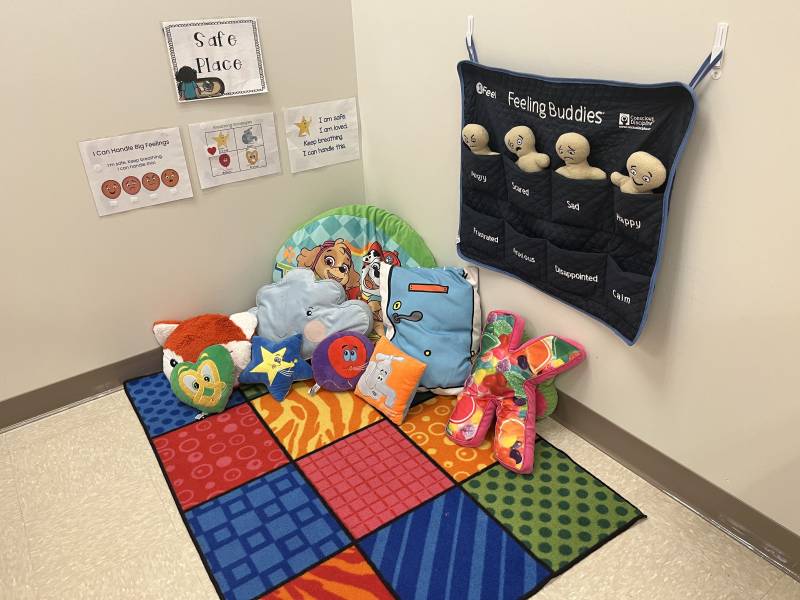When Jenny Kist’s students walk through the classroom door every morning, they take out their “little safe place” boxes. Made to be a portable version of a calming physical space in Kist’s early childhood education classroom, these small plastic pencil boxes hold everything Kist’s students need throughout the day to practice self-regulation and emotional identification.
Developed when Kist’s classroom went virtual after the onset of covid, “little safe place” boxes are now a mainstay for Kist’s three to five year-old students. Each student is provided with their own box and practices self-regulating breathing techniques, providing compassion and empathy towards others, and labeling and expressing their emotions throughout the school day.
Kist, an early childhood educator with 27 years of experience, works at a school that follows the Conscious Discipline framework, which is rooted in social-emotional learning and trauma-informed practices, and Creative Curriculum, a project-based early learning framework. Her school also encourages building a “school family” in order to foster safety and connection among the students, faculty and staff. For Kist, a big part of providing safety and connection in her classroom comes from helping young learners identify and process their emotions, and “little safe place” boxes are a tool for that.
“Being aware of your emotions is the first step in learning how to regulate them,” said Cara Goodwin, a child psychologist and author of the Parenting Translator newsletter. Identifying and expressing emotions are “essential for the development of empathy and for maintaining healthy social relationships,” Goodwin continued.
“Little safe place” boxes
Kist starts the school year by introducing her young students to the four basic emotions: happy, sad, angry and scared. She spends a week on each one, starting with happiness, and uses books, songs, and other classroom visuals as learning aids. Kist continues like this until students are well acquainted with the concepts inside of the “little safe place” boxes. Then she distributes a box to each child.

After that, each morning Kist guides students through using the different tools in their boxes. They take out a card that has faces for the four basic feelings and mark which feeling they identify with that morning. Then, the children take out their breathing strategy card, which has four different icons that indicate different breathing strategies that they have learned. The boxes also have a card in them that remind the students of what Kist calls “I love you” rituals – nursery rhymes with the lyrics changed and designed to help students with attachment and connection. Students practice an “I love you” ritual one-on-one with a classroom adult each morning.



